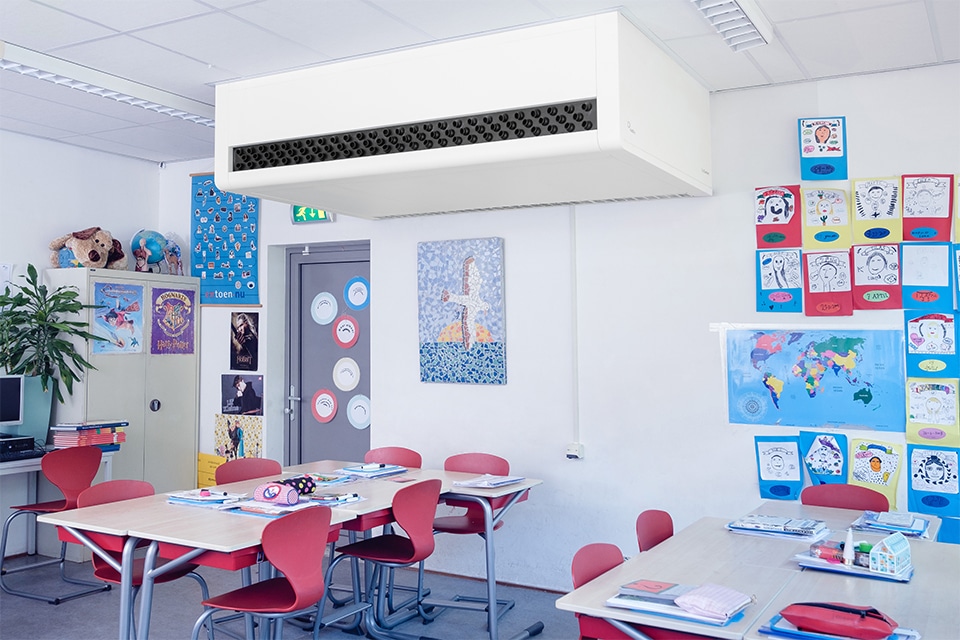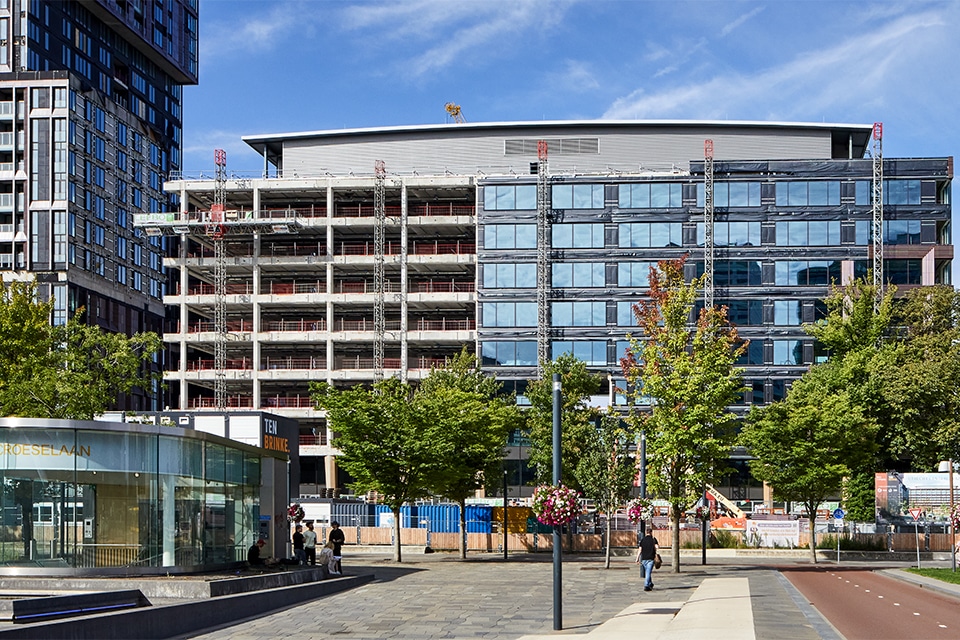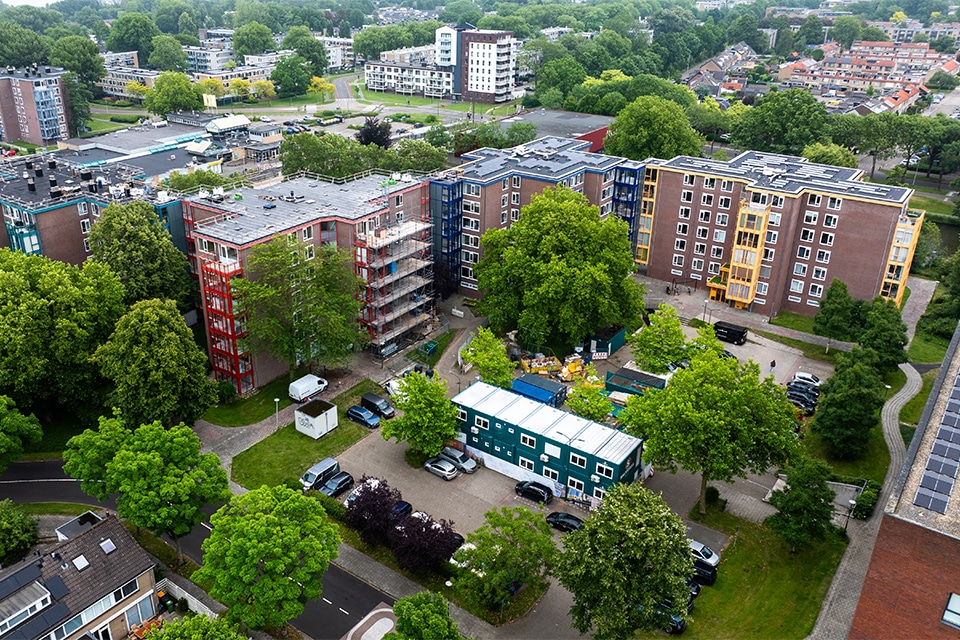
The story of the tropical agricultural school
The transformation of a tropical agricultural school into a striking housing ensemble was by no means a sinecure for developer and builder Ter Steege Bouw Vastgoed. Despite the considerable tension between the requirements of the Department of Cultural Heritage and the integration of the desired residential program, the Nieuwlarenstein project in Deventer has become a success story. After all, the new owners of the 73 homes are proud of their homes and special living environment. And that is what initiator and project developers Andries Tolman and Dennis van Eerden of Ter Steege Bouw Vastgoed do it all for.
"The story had to be told." This phrase recurs frequently in the interview between the reporter from Stedenbouw and both developers from the Apeldoorn-based real estate company. By the story, Tolman - who purchased the monumental school building on behalf of his employer in 2015 for redevelopment into a residential neighborhood - is referring to the history of the Secondary Colonial Agricultural School 'Larenstein' northeast of downtown Deventer.

The brick school building - a National Monument - was expanded in stages from its inception in 1912 until World War II with building sections built parallel to the courtyard. At the time, the courtyard was used for growing tropical plants and crops from colonial areas. According to the Rijksdienst voor het Cultureel Erfgoed, the orthogonal layout of the historical buildings had to be reflected in the redevelopment, but Ter Steege Bouw Vastgoed would have preferred to demolish the structurally less special building sections from the later periods to a greater extent in order to realize the residential program (a total of 74 dwellings) in an optimal manner. A compromise was eventually reached with the State Department, whereby part of the later additions were demolished and part integrated into the new building. A condition was that the original structure of the school's development would remain visible.

'Tropical years'
In the middle of the spacious square-shaped courtyard of Nieuwlarenstein, as the residential neighborhood is now called, Van Eerden and Tolman look back with satisfaction on six "tropical years. In this green oasis of tranquility, traffic noises from the two busy adjacent approach roads do not penetrate. The common courtyard - beautifully filled in by rectangular borders with ornamental plants and, at a later stage, tree meadows, vegetable gardens and a few exotics - is bordered by a striking palette of 73 homes, ranging from 19 stately mansions to 44 apartments, 9 ground-level studio/row houses and 1 detached house.
The oldest main building from 1912 - a national monument in rural chalet style with brown lightly nuanced and ochre yellow glazed brick, wolf end roof hoods and a regular, vertical facade articulation - has, of course, been left in place, fully restored and transformed into an apartment complex. New balconies have been added on the courtyard side. On the side facing the public road, hardly any visible changes have been made, due to its status as a national monument. It is also striking that the facade of one of the houses on this side contains a large horseshoe-shaped skirt window. This house also houses a full-width art deco bookcase as a reminder of the school library that used to sit here.
The former carpentry workshop and smithy - with its elongated monumental facade in austere chalet style - has also been stylishly restored and transformed into exceptional town houses. Particularly special is the layout of the houses, which is characterized by three low floors on the street side and a nearly five-meter-high living room on the garden and courtyard side.
In addition, two remaining building sections from 1936 and 1956 have been renovated. The monumental value here lies not in the structural and architectural quality, but reflect the rapid growth and success of this unique school. "Constructively, these building sections were in fact a drama... Nevertheless, we have renovated the buildings dramatically, including a facade from head to toe with anthracite-gray steel profiles. In that respect, we are very proud of the result," said Van Eerden and Tolman.

Continuation of square
The L-structure with the converted tropical agricultural school and blacksmith shop cum carpenter's shop has been completed into a complete square with new housing in a tightly arranged block and wing structure lining the courtyard. A new brick apartment building was built as an extension of the monumental main building and connected by an austere walkway. The new wing has a contemporary architecture with historical accents, such as the regular rhythm of the façade elements (windows and dormers). Residents of the row houses and townhouses have a beautiful view of the green courtyard through a 5-meter high glass front.
Building physics considerations
Ter Steege Bouw Vastgoed would have liked to implement building-physical measures in the renovated 1912 and 1918 building parts in order to optimize living comfort for the residents. The property developer would have preferred to use soundproof insulating glass, but the Department of Cultural Heritage considered that to be detrimental to the monumental windows. Therefore, most residents work with inset windows on the inside, a compromise of comfort and monumentality. "There were constant considerations regarding building physics. For example, front windows have been installed where facades are partially uninsulated and the dormers do have the building physics comfort of our time, while not disturbing the rhythm on the outside," Van Eerden said.
Construction Info
Developer
Ter Steege Bouw Vastgoed, Apeldoorn
Architect
ArchitectenLab, Deventer
Contractor
Ter Steege Bouw Vastgoed, Apeldoorn
Redevelopment process
2015 - 2021




